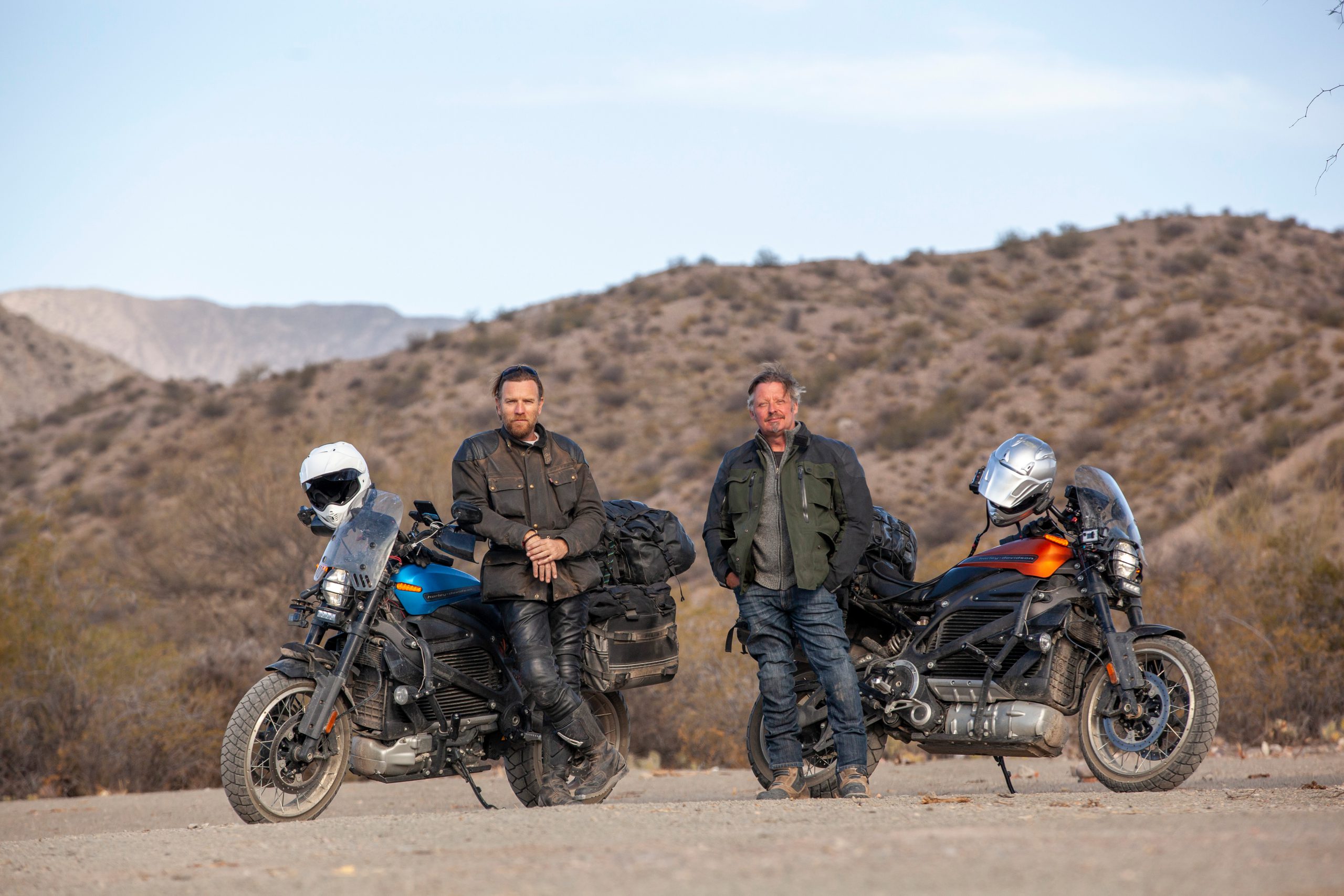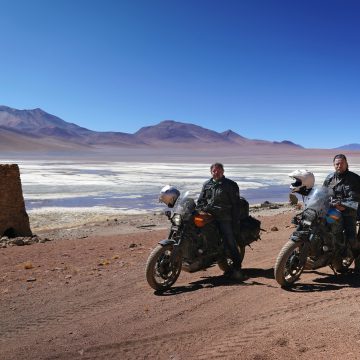For those in the know, Ewan McGregor and his best mate Charlie Boorman almost single-handily brought about the modern ADV motorcycle craze in their series The Long Way Round. It’s hard to believe that series first aired in 2004. Although McGregor was a well-known actor, the show itself had a somewhat homegrown, budget-conscious production quality that made it visceral and endearing. It’s a well-known fact that KTM refused to sponsor the show, believing there would be no value or interest in a cable-network only television series that followed two men as they crossed the globe from London to New York City. On the other hand, BMW leaped at the opportunity, firmly cementing the R1200 GSA as the reigning king in the ADV motorcycle market.
The success of The Long Way Round prompted McGregor and Boorman to make a second series, The Long Way Down, following the two on another epic journey, this time from Scottland to South Africa. The two have returned again, this time to chronicle The Long Way Up, a 13,000-mile journey from Argentina to Los Angeles.
Things have changed this time, however. Instead of the venerable BMW’s of the last two shows, the two would be utilizing electric motorcycles. As an advocate of clean energy himself, McGregor is initially ecstatic about the idea, but it becomes apparent quickly that there are some serious limitations to doing this. As far as electric automobile technology has progressed, the motorcycle world has a lot of catching up to do. Those in the motorcycling community may be familiar with the company Zero and their electric motorcycle range. After some preliminary rides on some of Zero’s offerings, they find the word “range” becomes more critical when talking about the distance covered between charging points. After some quick phone calls to some of the world’s biggest motorcycle makers, they find electric motorcycle development to be extremely limited. Harley-Davidson invites Charlie out to Geneva, Switzerland, where the company is showcasing a prototype of their new electric motorcycle called the Livewire. After a few laps around a test course, Charlie is smitten with the bike. Harley commits to outfitting the duo for their adventure, promising some upgrades to the range and motorcycle’s overall touring setup. The Livewire is set up as a high-performance street bike in its stock form, akin to a naked bike.
If they were to accomplish this adventure utilizing electric motorcycles, the trip’s planning phase was going to become much more cumbersome. The pair reunites with producers/directors David Alexanian and Russ Malkin from the last two Long Way series and begins assembling a London team for 3 months of pre-production. With the bike’s being worked on by Harley’s engineers, the team could focus on the trip’s logistics. Running with the “eco-friendly” theme, the group decides to look into electric support vehicles as well. Electric truck manufacturer Rivian commits to the manufacture of two pre-production vehicles dubbed 01 and 02.
With days to spare before the official production begins, Harley unveils the bikes to Ewan and Charlie, complete with upgrades that include parts from their upcoming Pan American adventure bike. Rivian slaps together the prototypes and commits to building a charging support network along the proposed route. All seems to be falling into place, but Argentina is experiencing it’s worse winter since 1994, a situation that is sure to make things more difficult as the duo starts their journey.
While we’ve only watched the first three episodes, a few things really stick out. First, there’s the enduring friendship between Charlie and Ewan. It’s just so good to see these two together again. Many of us cut our adventure souls watching these two kindred spirits cross the world together in the Long Way Round and the Long Way Down. What’s more, Charlie was in two serious motorcycle accidents where he was injured badly, months before their scheduled departure. As Ewan says, they had both drifted apart due to work and the fact that Ewan had moved to LA. After Charlie’s injury, he realized the value of the important relationships in our lives and how you “have to look after them.”
The show’s focus digresses a little early on, becoming less about the adventure and more about the goal of accomplishing it on electric motorcycles. I suppose as pioneers in any space, being the first to do anything is decidedly difficult. But, it is apparent that the technology was coming up against technical feasibility. Making matters worse, there are long stretches of road in South America, where existing electrical infrastructure simply doesn’t exist. In the first three episodes, the bikes have run out of power 3 times and the Rivians once. This required the team to call in diesel-powered generators to get the job done. Suddenly, not so eco-friendly.
What is glaringly apparent is how far behind electric motorcycle technology is compared to the auto market. I wondered to myself, why this is? Is the market too soft, or is it truly that difficult to get a decent range out of a two-wheeled vehicle? Do motorcyclists just love the sound of a petrol engine? At the end of episode three, they have been on the trip for two weeks and hadn’t even covered 1000 miles. This has resorted to the editing in of much more b-roll than in the last series and less motorcycling adventure. To be fair, the human stories made the first two series what they are, but the motorcyclist in me misses the bike stuff.
I am told by others that have gotten early access to the entire season that the team eventually irons out the charging dilemmas we’ve been forced to witness during the first three episodes. While I like the idea of electric motorcycles, there are times where even Ewan and Charlie seem to be acknowledging their current limitations. Until charging stations litter the countrysides of the world like gas stations, I suspect this will be an ongoing issue until bike manufacturers really focus on developing bikes with better range.
I’m looking forward to seeing the rest of the show and getting past the team’s glaringly obvious problem trying to force the issue of using electric vehicles. Hopefully, as the season progresses, they can get into a rhythm and iron out the charging challenges. As a proof of concept, it is a noble effort, but after three episodes, the bikes are a distraction to what I came looking for. So far, the bikes are making the Long Way Up take even longer.
The Long Way Up is available for streaming now on Apple TV+.


